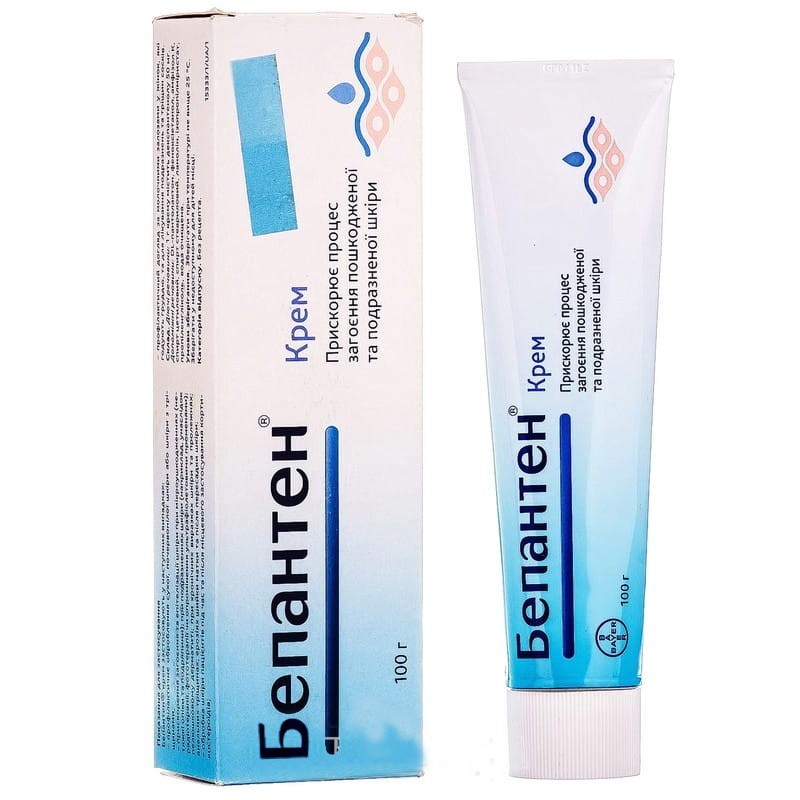



 Secure and encrypted payment processing
Secure and encrypted payment processing We ship to over 40 countries including the USA, UK, Europe, Australia and Japan
We ship to over 40 countries including the USA, UK, Europe, Australia and Japan Guaranteed refund or reship if you haven't received your order
Guaranteed refund or reship if you haven't received your orderdexpanthenol - the active substance of the drug bepanten® cream, in the cells quickly turns into pantothenic acid and acts like a vitamin. Dexpanthenol is better than pantothenic acid when absorbed locally.
Pantothenic acid is a component of essential coenzyme A (CoA). In this form of acetyl coenzyme A, coenzyme A plays an important role in the metabolism of each cell. Pantothenic acid is, therefore, necessary for the restoration and regeneration of damaged skin and mucous membranes.
Pharmacokinetics Dexpanthenol is rapidly absorbed by the skin, after which it immediately turns into pantothenic acid and is added to the internal depot of this vitamin.
In the blood, pantothenic acid binds to plasma proteins (mainly with albumin and β-globulins). In healthy adults, its concentration is approximately 500–1000 μg / L and 100 μg / L in blood and plasma, respectively.
Pantothenic acid is not metabolized in the body and is excreted unchanged. After oral administration, 60–70% of the dose is excreted in the urine, the rest with feces. In adults, 2–7 mg of pantothenic acid is excreted in the urine per day, in children - 2–3 mg.
Bepanten® cream is used in the following cases:
Acceleration of healing and epithelization, regular skin care: apply bepanten® cream 1 or several times a day if necessary.
Breast care for breastfeeding women: apply cream on the nipples after each breastfeeding.
Treatment of defects in the mucous membrane of the cervix uteri: apply the cream 1 or several times a day under the supervision of a doctor.
Baby Care: Apply Bepanten® cream after each change of diapers (diaper).
Bepanten® the cream quickly penetrates the skin, therefore it is suitable for the care of wet wounds, unprotected surfaces of the skin (face) and skin covered with hair. It is easily distributed on the surface, so it is suitable for the treatment of painful sun and other minor burns.
Hypersensitivity to dexpanthenol or other components of the drug.
From the immune system, as well as the skin and subcutaneous tissues: there are reports of allergic reactions and allergic reactions from the skin: contact dermatitis, allergic dermatitis, pruritus, erythema, eczema, rash, urticaria, skin irritation and blistering.
When using the drug, contact with the eyes should be avoided.
Cetyl alcohol, stearyl alcohol, lanolin can cause local skin reactions (e.g. contact dermatitis).
Propylene glycol can cause skin irritation.
During pregnancy and breastfeeding. There is no reason to believe that the use of the drug during pregnancy and lactation is associated with risk. During pregnancy, the drug should be used as directed by a doctor.
When used to treat nipple cracks during lactation, the drug must be washed off before feeding.
Children. The drug is used in children of different age groups, including infants.
The ability to influence the reaction rate when driving vehicles and working with other mechanisms. Does not affect.
No cases of interaction with other drugs were noted.
The active substance of the drug bepanten® cream, dexpanthenol, is well tolerated and, therefore, is considered non-toxic in the literature. hypervitaminosis is not described.
At a temperature not exceeding 25 ° c.